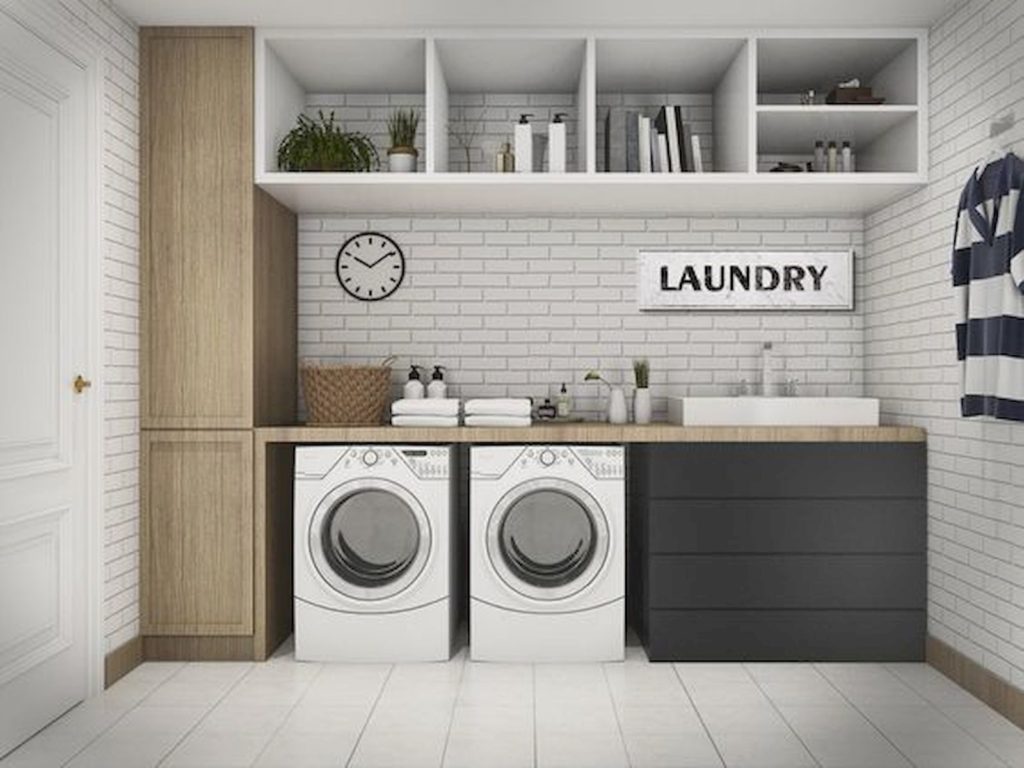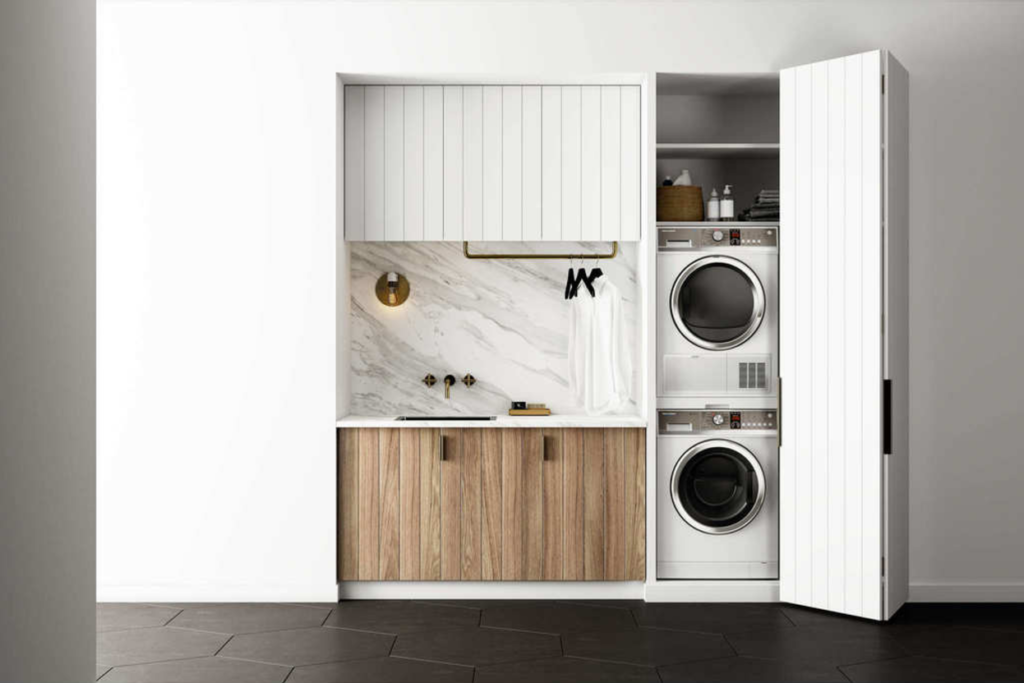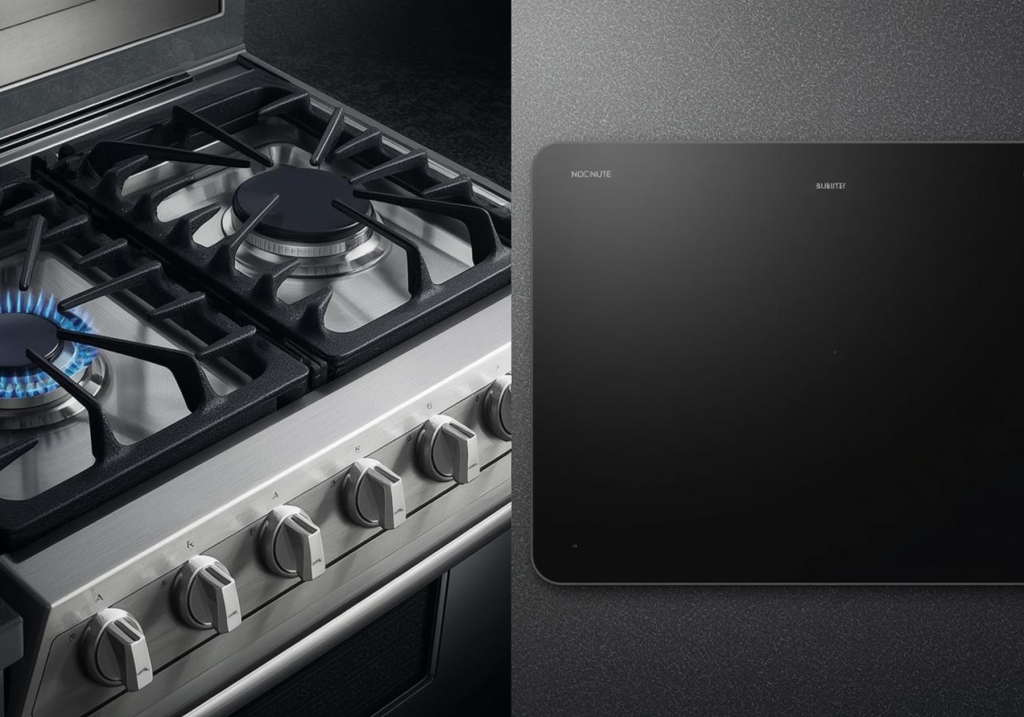Back in the day, the traditional New Zealand laundry was often referred to as the ‘wash house’, partly because it was a separate building from the home or an ‘add on’ and accessed from outside, usually via the back porch. There was no such thing as ‘laundry trends’, it was the place where the washing was done in bulk once a week. The tools of the trade were manual hand crank wringers and the trusty top-loader agitator washer. The process involved a lot of ‘elbow grease’ and was certainly not a place to be proud of or spend much money on. And the only ‘laundry tips’ were about how to remove stains.
But thankfully times have changed and so has technology. No-one wants to go outside to do the laundry and with all the clever interior design options, new features and wash settings it’s a much easier process and area to incorporate into our homes and lifestyle. These are some of the basic laundry design tips & ideas you should think about when updating your laundry.
Layout, design and usability
No matter the style of your home, the laundry gets a lot more attention these days. It’s a functional part of your home that can either be its own room, integrated into the main bathroom, garage or even the kitchen, or cleverly hidden behind doors to make use of an otherwise under-utilised nook. Ideally, there should be plenty of bench space and storage, including shelving. And other thoughtful touches depending on your lifestyle and personal garment care needs.
Think about garment care features
For some, providing a place to drip dry shirts is essential, be it a rail or a hanging rod. Drying cupboards are coming back into style again too, while ironing facilities are also important; smart use of a fold-down ironing board, or one that folds up inside a drawer maximises space in the laundry.
Storage
Storage is essential, the laundry can be used to store all sorts of things, from vases to vacuum cleaners, cleaning products, winter bedding and larger seasonal furnishing items. It’s guaranteed that storage will forever be a laundry trend!
Sinks to suit
Sink preferences can vary and there are some smart shapes including slimline deep options on the market to suit your space; but it’s best to choose a sink that you can put a bucket in with room to clear the tap.
And what about appliances?
Our main laundry tips are to choose the right appliances for your household needs and the space you have!
Top loaders trumped by front loaders
Right now front loaders are now outselling the old traditional kiwi favourite top loaders by a huge margin. Basically front loaders are more economical, quieter, and generally provide a better wash. Did you forget to add something like a rogue sock after the wash started? Never fear, most new models can now be stopped partway through a wash to add items that you may have forgotten. Other smart features include super quick wash cycles for smaller ‘emergency washes’. Not in a hurry? There are economical wash cycles for larger loads using less water or less energy than a traditional top loaders.
The most popular dryer is not the traditional vented dryer, people are moving towards condenser or heat pump dryers. While the initial outlay for a heat pump dryer is more expensive, it is cheaper to run. It’s estimated you can make up the difference within three to four years in power savings. They’re highly recommended if you are doing three or more loads of washing a week.
However, if you just have one load a week, or only use the dryer in the wetter months then a less expensive condenser dryer is a good option, even though it typically uses more power each cycle. Condenser dryers collect water from the drying process, which can be automatically expelled via the laundry sink or pipes.
Side by side or stacked?
The configuration you choose for these two appliances is dictated by space, with many people opting to stack or hang dryers above washers if floor space is limited. Another consideration is ease of use during the loading process. If you’re putting your front loaders and dryers side-by-side we suggest raising them up on a plinth, so they are easier to load and unload.
Top Laundry tips for a hard-working laundry
– Wherever you have your washing machine and dryer, make sure there is good ventilation, also take care with the acoustics; install noise-control where possible to muffle washing machine noise.
– A laundry is a wet area so you need to treat it that way, with surfaces and flooring that is low maintenance, splash and mould resistant, and easy to keep clean.
– If you have a stand-alone laundry or it’s in your garage, be smart with the space. Hang your dryer on the wall. Have sorting, drying, folding and ironing areas if you have the luxury of space.
– Remember to incorporate cupboards or shelving to store things like cleaning products and vases safe from little hands. Rail shelving (as opposed to solid shelving) allows air to circulate from underneath so your sheets and duvets shouldn’t get so musty.
– Good lighting isn’t always a top consideration in the laundry, but where possible include natural light. If natural light isn’t an option for you, we suggest focusing on good lighting for functionality.





